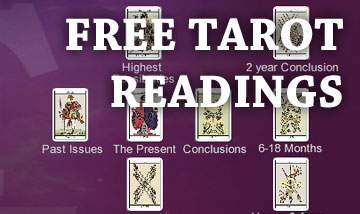Yoga
Physiology
(article courtesy of my friend
and yoga teacher
Amanda Brown)
Brief
Information on Yoga Physiology, Prana and The Aura
From my own, limited, view,
the central premise of yoga understanding of human physiology concerns the
intake of prana with the breath, as well as the prana contained in
physical food and liquids.
Kent defines prana as the
"motivitating force of living matter", it is also referred to as the
Life Force, "Chi", in China or "Ki" in Japan.
In simple terms yoga
tradition maintains that the human body consists not only of the physical
structure but also the electrical emanations from the whole being, with
varying degrees of density, known collectively as the aura, in a ratio of
2/3 physical and 1/3 electrical. The
densest radiation of the aura consists of the etheric, which is contained
inside the astral body, and extends just a few inches out from the skin,
and the finest radiation forms the outer level of the aura, called the
causal body. (In some religious disciplines this is also referred to as the
nerve body and/or the akashic record.) The full extension of the aura is
usually judged to be approximately 3 ft. but is variable according to
process, general health and spiritual enlightenment.
Within the astral body,
probably at the etheric level, are the "subtle revolving vortices of
energy" (Sturgess) known as the chakras. These are the transformers
"which receive, assimilate and distribute prana" (Sturgess) to the
physical body through their connections with the endocrine and nervous
systems. Sturgess describes
prana as flowing first to the higher brain centres then filtering down
through the six main chakras which are closely connected to the 3 central
nadis, which form part of the so called "subtle" nervous system
permeating the physical body and the aura.
(These central nadis, running the length of the spine and the skull
probably correspond with the "Governing Vessel", and the ascending
dorsal section of the "Great Central Channel (meridian)", from the
Chinese Acupuncture tradition. (Gach)).
Whilst prana itself is a
pure cosmic 'fuel', it is affected by the environment it appears into
and as it moves through the chakras it connects with each individual's
particular characteristics. The
interplay of thoughts, attitudes, feelings, behaviour patterns, habits and
actions, as well as the social and environmental stresses the individual
is subject to, will all have an effect (or warp factor) on the quality and
quantity of prana actually absorbed. So unremitting stress, "artificial
values stemming from acquisitiveness and self interest" (Iyengar),
alienation from spiritual purpose and the many and varied strains of an
unnatural way of 21st century life, will all help to diminish
the value of the prana received. The human vehicle then ends up running on low octane or
polluted energy causing malfunction and 'dis ease', with resultant
physical manifestations in vulnerable areas.
Yoga is sometimes referred
to as the science of religion with the view that the human body is a
vehicle for the spirit and soul (perhaps best viewed as the passenger and
chauffeur!) It offers a
number of tools with which to tune and rebalance the 'vehicle', so
that it is able to attract the appropriate level and quantity of prana,
and fulfill the human function. Asana
and pranayama techniques "cleanse the body of tensions, toxins and
impurities and release energy blocks, which impede the harmonious flow of
energy in the body." (Sturgess)
Meditation techniques have several benefits.
For example, not only do they allow a deeper connection to the
inner life, which can lead to greater understanding of the actual causes
of a person's 'dis ease', they also allow an increase in the
connection to, and sharing of, the higher levels of the life force, which
are themselves healing and enlightening to the body, mind, soul and
spirit.
Yoga, it is believed,, has
been evolving and practised for at least 3 thousand years, and inevitably
many schools and disciplines have emerged differing in detail but with the
central themes remaining intact. These
understandings have arrived during states of deep meditation and resultant
'in tuition'. This has
come about through connection to what Tara Patel describes as the "vast
mind realm" and which in yoga literature is referred to as the
"watershed of knowledge" within the ultimate state of meditation,
samadhi. In
psychological terminology this might be described as the higher end of the
bar of Jung's collective unconscious, or the superconscious.
In some ancient writings this can be referred to as the "astral
light" of which there are said to be 7 levels, from high to low.
It is perhaps difficult
for western minds schooled in the scientific disciplines of bio medicine
to accept this yoga view of human physiology.
However, as evidence emerges demonstrating the existence of the
energy field surrounding the physical structure and the links between
states of mind, breath and body, together with the increasingly apparent
health benefits of asana, pranayama and dhyana techniques, perhaps a
meeting place of the views can be found?
After all it could be said that the rod of healing has two ends and
that bio medicine approaches from the Prakrti (Supreme Matter) perspective
whilst yoga (and perhaps other alternative or complementary remedies)
approach from the Purusa (Supreme Spirit) view.
Without doubt, the physical and electrical worlds mingle and affect
each other; in the words of Mehta "the interaction of prakrti and purusa
results in creation."
In terms of the healing
use of yoga, it would certainly seem to come within the scope of
Antonovsky's ideas of providing salutogenic solutions, ie finding ways
for people find meaning for their life, and to cope with and help manage,
(or even perhaps identify the causes of and possibly combat) their own
particular manifestation of 'dis ease' with our way of life in the 21st
century.
Sources:
Gach,
M R & Marco C: Acu Yoga, the acupressure stress management
book, Japan Publications Inc. USA
1981
Iyengar B K S: Illustrated Light on Yoga, Thorsons edition 1995
Kent, Howard: Yoga for Health Foundation Teacher Training Information 1998, Yoga for the Disabled, Sunrise Publications 1985, Breathe Better Feel Better, People's Medical Society USA 1997
Mehta, Silva, Mira & Shyam: Yoga the Iyengar Way
Open University, K203 Working for Health: Block 1: "Antonosvsky": P 37 to 39
Stephen Sturgess: The Yoga Book, Element Books 1997
Yogi Ramacharaka: 1904 Correspondence class course, 14 lessons in Yogi Philosophy, published by Camelot Press, London, undated.
 DISCOVER TAROT ON iPHONE, iPAD AND ANDROID.
DISCOVER TAROT ON iPHONE, iPAD AND ANDROID.
Learn Tarot Card Meanings, what they mean when combined in a reading, test your knowledge in the Tarot Quiz and reveal what the future may hold with the Tarot Reading App.





